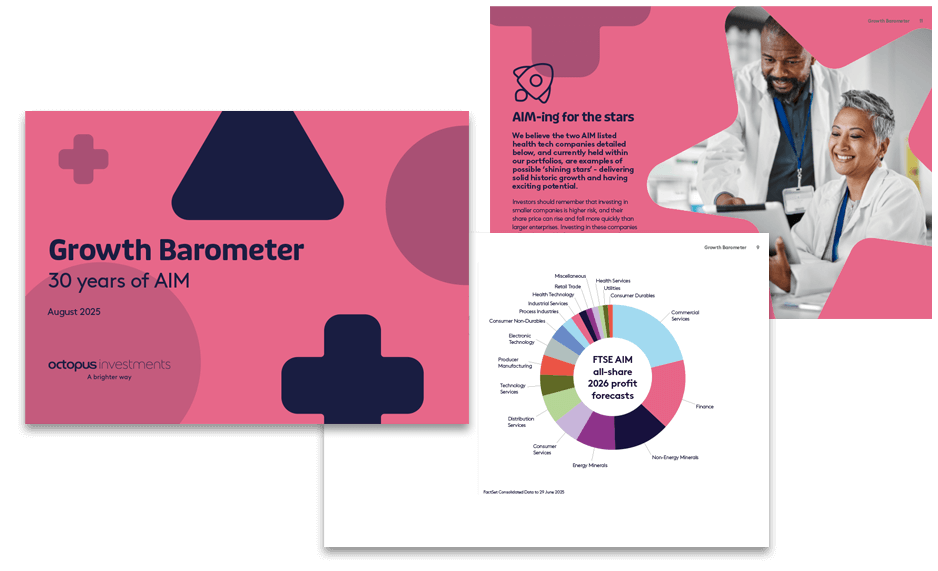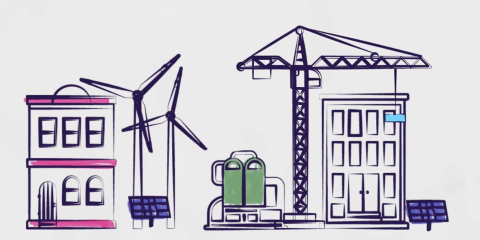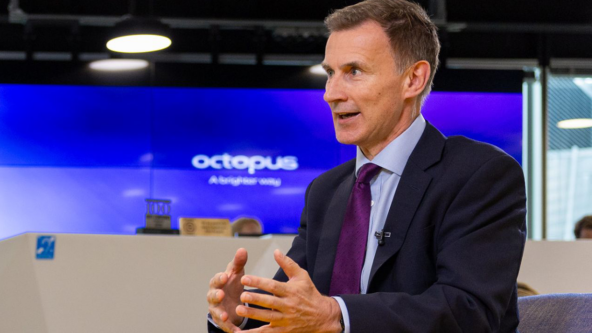2020 was a difficult year. There’s a little too much uncertainty right now to know what 2021 will bring, so we thought we’d look a bit further into the future instead. What will the world be like in 2030?
In this piece, we’re thinking about energy consumption. We first published this at the beginning of 2020, looking ahead over the next ten years. No one could have predicted the year we’ve just had but despite this, we still think energy in 2030 will look different from today. The UK still has big renewable energy targets to hit so we can combat climate change, so we’re still working towards a greener, cleaner future.
Will we be powered solely by green energy in the future? Is there a more environmentally friendly way for us to fuel our homes? And can we use technology more to make electricity cheaper and more efficient? Alex Brierley, Co-Head of Octopus Renewables, and Phil Steele, who works with future technologies at Octopus Energy, certainly think so. We asked what 2030 looks like for them.
Renewable energy will power us
The big problem with renewable energy sources is that we can’t switch them on when we need them. We can’t guarantee it’s going to be windy when everyone gets home from work and wants to put their heating on, for example. There are different ways to work around this problem, most involving storing renewable energy. By 2030, we should have cracked it and will be at a point where we’re almost entirely powered by renewable energy.
Economically, wind and solar power are the best forms of renewable energy. They’re the cheapest to run and they’re the resources we have the most access to. In nine years, the cost of the technology associated with wind and solar power should drop even more, making it more accessible to customers. This means that by 2030 most houses will have solar panels or wind turbines installed, enabling them to generate their own renewable energy. At the very least, every new house will be built with these capabilities.
A good example of this could be solar panel roof tiles. Instead of installing large solar panels on top of your roof, the technology that collects the sun’s energy would be built into the tiles themselves. These solar tiles would use space much more efficiently than traditional solar panels and would allow them to blend more seamlessly into a home’s architecture. In nine years’ time, perhaps we will see solar roof tiles replacing traditional ones.
Solar batteries in the home
As we’ve already mentioned, one of the biggest barriers to powering the UK with renewable energy is balancing our demand for energy with the supply of it. At the moment, we have to rely on non-renewable power, like oil and gas, because it can be turned on when we need it. But we could go a long way towards solving this problem by using in-home batteries to store renewable energy for later use.
The batteries would be charged using a combination of non-domestic renewable energy (from large wind and solar farms) and energy generated from the customer’s own home, using solar panels or wind turbines on the roofs of houses. If a home produces more energy than it needs through its renewable generators, it could sell it back to others. The environmental benefits of this kind of storage system are huge, as it would allow us to tackle the problem of climate change and bring UK emissions down.
Alongside this, in-home batteries would save customers money on their energy bills. For example, some customers may produce enough energy using just their solar panels, so wouldn’t have any bills at all. If you did need a little more power, your battery could be charged when electricity prices are at their lowest. And everything, from when to charge the battery to selling home-generated electricity back, would be managed by a piece of technology that we will discuss in more detail later on.
Early experiments with in-home battery technology have proven extremely successful. They’ve also shown there could be massive advantages for social housing, in particular. Together Housing, a UK housing association, installed solar panels and batteries in a number of their properties as a trial. Some residents were able to meet 90% of their energy needs with solar energy, and so reduce their overall electricity bill. This highlights both the environmental and financial potential of battery storage. By 2030, domestic renewable generation and in-home battery storage should be the norm in most homes across the UK, especially within social housing.
Homes manage energy consumption
Solar batteries are just one part of the fully integrated home energy management system (or HEMS) most homes could adopt by 2030. A HEMS is a piece of technology that manages energy flow and usage within your home.
A system like this would connect all the appliances within our home, from kitchen appliances to radiators, and underfloor heating to solar batteries. The system would take in information like the cost of energy, the demand for energy, the energy being generated by the home and the need for energy within the home, and would allocate energy accordingly among the different appliances.
A HEMS is another way to smooth out the distortion between the supply of and demand for renewable energy as it can intelligently manage the flow of energy. That might mean that each home doesn’t need their heating on as early as they think in order to reach the right temperature when everyone comes home from work, for example. In this case, there would be an overall saving of energy at peak times.
Customers will save money too, as your HEMS will manage your energy consumption so that you pay the smallest possible price for your energy. That might mean charging your home battery or electric vehicle overnight, or setting your washing machine to turn on first thing in the morning. Everything will be monitored by technology, happening automatically in the background to make our lives greener, easier and cheaper.
New technology
There are lots of new technologies in development that could change the way we heat our homes and hot water in 2030. For example, Mixergy is working on a new, more efficient way to heat water. Traditionally, immersion water heaters have to be heated up in their entirety. Not only does it take ages, but it’s also quite inefficient and wasteful, as you don’t always need a full tank of water. In contrast, Mixergy’s technology lets you heat water in layers, so you only heat what you need, say, for one shower, saving money, energy and time. It’s the same as only filling the kettle up with the right amount of water for one cup of tea, instead of boiling the whole thing every time.
Tepeo is also working on more efficient heating and is currently developing new, zero carbon storage heaters. Their system can plumb into existing radiators to replace gas or oil boilers, again offering a greener and cheaper alternative.
Hopefully these technologies, and many more, will be integrated into our homes by 2030, helping us work towards cheaper, more efficient use of energy. Working together with HEMS, solar batteries and more renewable production, we can aim to become less reliant on fossil fuels, allowing us to fight climate change by moving towards sustainable, renewable power.








